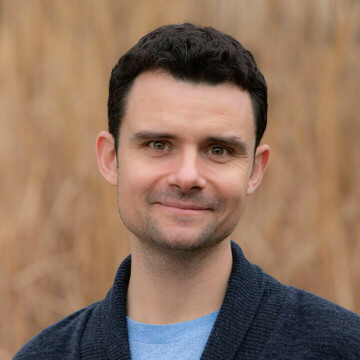
COLUMN: Once-in-a-Lifetime Events, Take Two
contemplating all the ‘can’t miss’ events we end up missing
BJ Hollars, illustrated by Grace Pedersen
On April 8, millions of travelers drove hundreds of miles for an unencumbered view of the total solar eclipse. I was not among them. Instead, I taught a class, walked a dog, and didn’t have much sense of what I’d missed. At least until nightfall, when my social media feed showed me precisely what I’d overlooked: an alignment of earth, sun, and moon so spectacular it seemed less like science and more like a meteorological miracle.
Regret began to take hold.
Next time, I assured myself, I’ll be there.
Though maybe not. The next total solar eclipse visible to us in Wisconsin won’t occur until 2099, and I’m afraid I have plans to be dead that day.
When the northern lights lit up the sky the following month, I promised myself I’d do better. I took note of the best conditions by which to see them, and then drove to Caryville – far from city lights – where the darkness all but ensured a second-to-none light show. Only the universe had other plans. I saw nothing. A whole lot of nothing. After 30 minutes of craning my neck to observe that nothingness, I drove home cursing the universe.
Next time, I assured myself, I’ll see something.
All of which brings us to nature’s third and final grand display of the season. Not an eclipse or an aurora, but a different kind of must-see event: “cicada-geddon.”
”
Under normal circumstances, missing my front-row seat to a swarm of bugs might not be so bad. But these are not normal circumstances.

B.J. HOLLARS
If you, like cicada nymphs, have been living underground for the past several years, allow me to explain. This summer is the first time since 1803 that a pair of adjacent periodical cicada broods are co-emerging. And so, any day now, a squadron of 17 million cicadas is set to darken the skies of the Midwest and Eastern Seaboard. They’ll come for our forests and farmland, buzzing at a decibel level on par with jet engines. They’ll clatter against our windows and doors, the buggy version of Hitchcock’s The Birds. Of all the “once-in-a-lifetime” events I’ve thus far missed, this is the one I can least afford to. A “cicada-geddon” of this magnitude won’t occur again until 2245 – a day when I definitely plan to be dead.
With two strikes against me, I’d been anxiously awaiting the arrival of the cicadas for weeks. Only to learn today that all my waiting is for nothing. While the cicadas will grace us with their presence in 16 states (including Wisconsin), here in the Chippewa Valley, we’re about one latitudinal degree off from seeing them ourselves.
Under normal circumstances, missing my front-row seat to a swarm of bugs might not be so bad. But these are not normal circumstances.
By the time you read this, I’ll have turned 40. While I’m not too caught up in the midlife metaphors (“sands of time,” “over the hill,” etc.), I am entirely caught up in performing a little midlife math as it pertains to these “once-in-a-lifetime” events. If the average life expectancy for an American man is 76, how many more eclipse opportunities might I have left? How many clear nights for northern lights? How many bug plagues of biblical proportions?
There’s a bigger question, too, lurking just beyond these small ones: What motivates us to experience these events in the first place? Are we practicing a “carpe diem” approach to life, ceasing day after day just to say that we did? Or are we merely checking random items off half-baked bucket lists?
The truth is this: I will weep no tears if a swarm of cicadas fails to overrun my town. Probably, I’d prefer not to see them. But there are a few once-in-a-lifetime events I’m desperate not to miss, and I’m already planning ahead.
If anyone needs me on July 28, 2061, I’m afraid I’m indisposed. That’s the day 77-year-old me will peer up at the sky to see Halley’s Comet.
Assuming I make it that far (I’ll already be pushing the average lifespan) this comet is likely to be the last “once-in-a-lifetime” event I’ll ever experience.
There’s a good chance I won’t remember all that I’ve missed.
And a better chance I’ll never forget what I see.